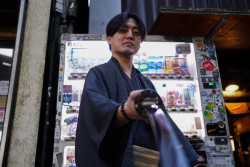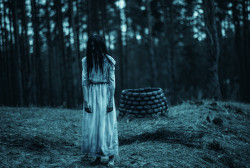
Originally published on metropolis.co.jp on March 2012
The contemporary Japanese dance form of butoh, originally called ankoku butoh (loosely, “dance of darkness”) is the only post-war style of dance from these shores that has made a significant impact internationally. In fact, among worldwide contemporary dancers and performance artists, butoh is considered quite influential and strikingly compelling. Strange, then, that the form is not better known among Japanese people themselves or the world at large.
One explanation for the latter is the relative dearth of literature on the art in European languages—including English. Stephen Barbar’s introductory work Hijikata: Revolt of the Body (Solar Books, 2010) and Sondra Fraleigh and Tamah Nakamura’s impressionistic text Hijikata Tatsumi and Ohno Kazuo (Routledge, 2006) have gone part of the way in bridging the gap (though the latter has been criticized as being inaccurate and subjective). The scholar Miryam Sas (a professor at UC Berkeley) has written some insightful articles and book chapters, but no monograph solely on the topic.
Bruce Baird’s work, Hijikata Tatsumi and Butoh:
Dancing in a Pool of Gray Grits, is an epic leap forward in archiving, describing and analyzing the important art form of butoh, in English. Based on Baird’s Ph.D thesis at the University of Pennsylvania, this highly detailed study of butoh’s founder, Hijikata Tatsumi, took him 13 years to complete. Butoh itself is notoriously difficult to summarize, as Baird notes:
“Observers seem compelled to verbal contortions to articulate what they see: ‘the grotesque and beautiful, the nightmarish and the poetic, the erotic and the austere, the streetwise and the spiritual.’”
Indeed, butoh must be seen to be comprehended, and spoken descriptions all fall short. For this reason Baird goes to great lengths to describe precisely Hijikata’s dances, as well as relate the historical and artistic conditions and ideas that informed them.
Briefly, butoh started when Hijikata, as well as Ohno Yoshito—son of dancer and collaborator Ohno Kazuo—performed Forbidden Colors (Kinjiki, based on the Yukio Mishima novel) on May 24, 1959. Erotic (with explicit references to gay sex), transgressive and shocking, the presentation be described as performance art today rather than dance, and it was from this outline that Hijikata went on to develop what can rightly be called a dance form (if an abstract, mutable and conceptual one). Some of the more recent butoh groups have gained greater recognition than Hijikata himself. These include Sankai Juku (which has toured the US many times) and Dairakudakan (founded by Maro Akaji).
Baird’s book accomplishes three necessary tasks in laying the groundwork for butoh scholarship. First, Hijikata is put back in the spotlight. Though widely acknowledged as the founder of butoh, because he never toured outside of Japan, did most of his important performances in the 1960s and early ’70s, and died over 25 years ago, few know the particulars of his life and art. Baird’s work explains why it’s so crucial. Second, Baird addresses the frenzied and anarchic years between 1959 and 1968, when Hijikata presented his seminal performance Hijikata Tatsumi and Japanese People: The Revolt of the Body. Previously, practically nothing has been written in non-Japanese languages about this formative ten-year period. Thirdly, and perhaps most importantly, the author gives a conceptual framework for the Hijikata method. Though butoh appears improvised, Hijikata actually created and catalogued a series of positions and moves used in the art. This canon is known as the Hijikata method (or butoh-fu), and has never been outlined in English before. In fact, even some familiar with butoh are not aware of it.
These achievements, as well as incisive overall analysis of Hijikata Tatsumi’s work, make this book both groundbreaking and compelling. It’s not an exaggeration to say Baird has laid the foundation for butoh study in the west, and provided an invaluable resource for all those interested in the dance form.
Available in major bookstores and via amazon.jp.







